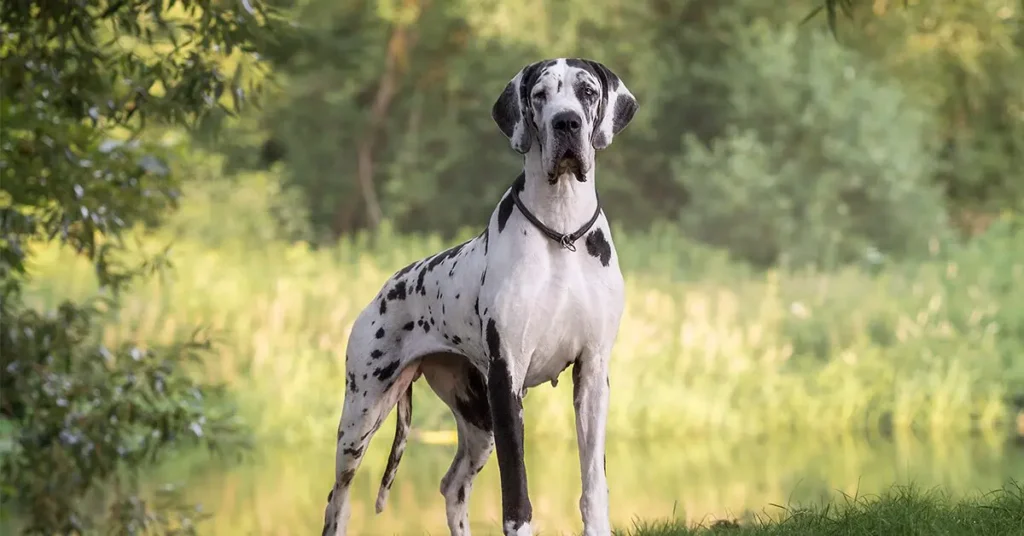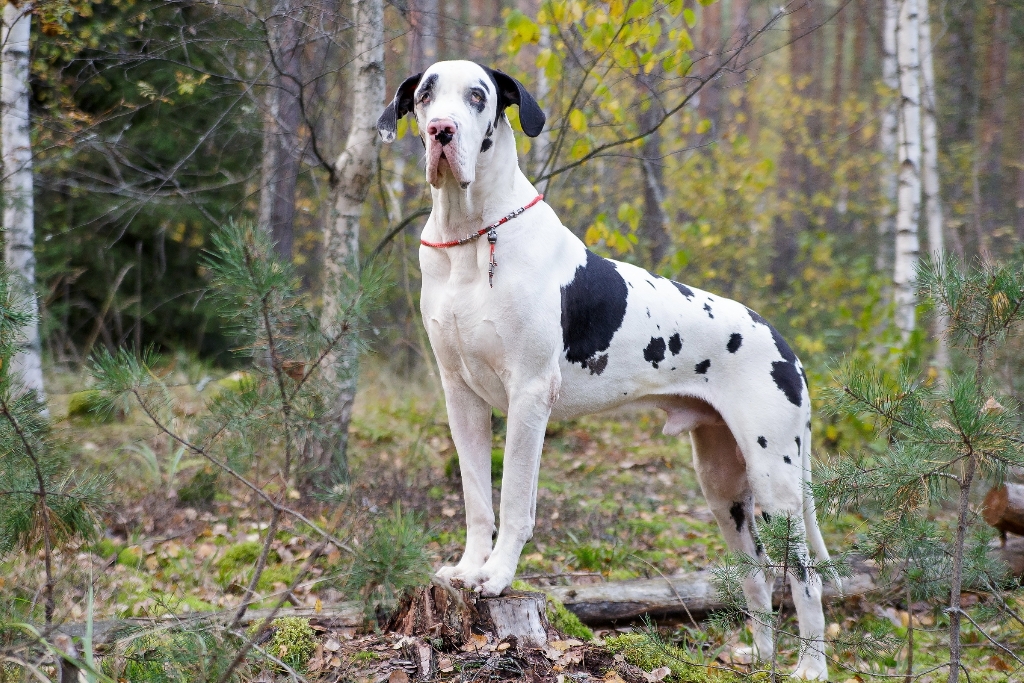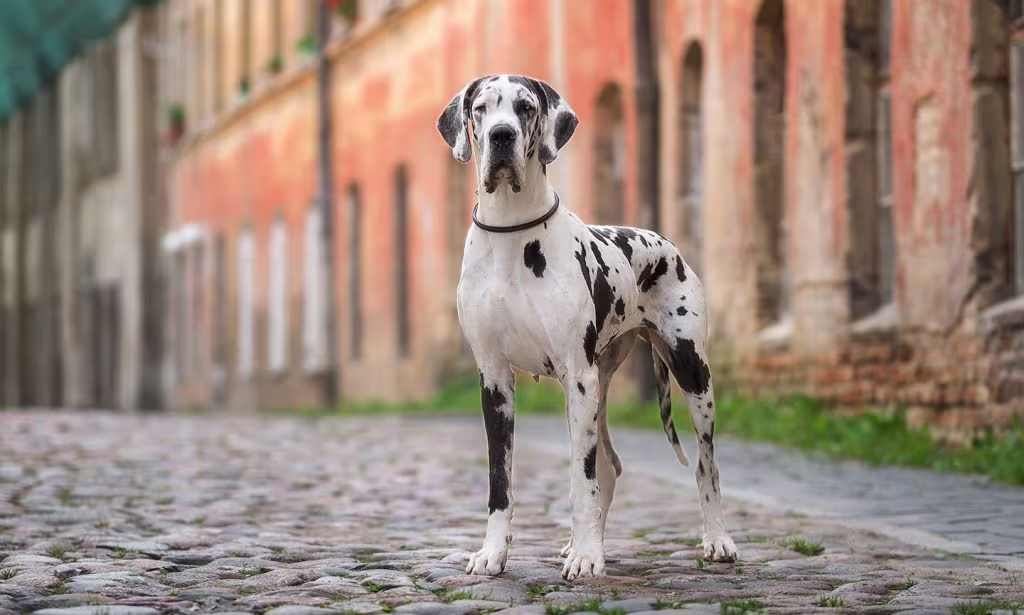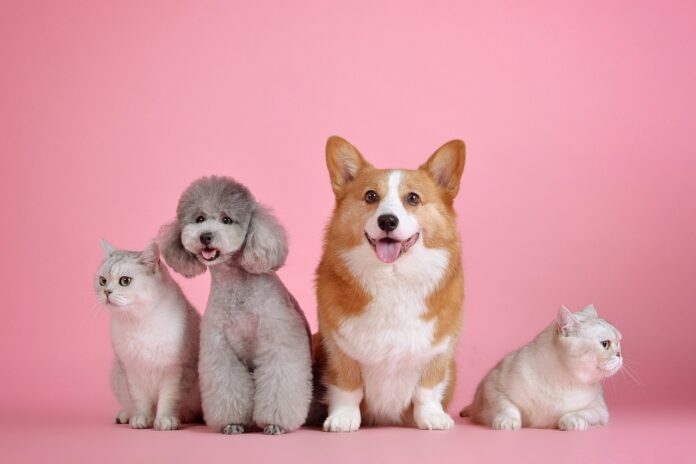Introduction to Giant Dog Breeds
As a passionate pet owner, I’ve always been fascinated by the unique relationships that can develop between different types of animals. One such dynamic that often intrigues me is the interaction between giant dog breeds and cats. While the size disparity may seem daunting at first, I’ve come to learn that these two unlikely companions can actually form incredibly strong and harmonious bonds.
In this article, we’ll explore the world of giant dog breeds and uncover the top breeds that are particularly well-suited for living alongside feline friends. We’ll delve into the characteristics, behaviors, and training methods that can help foster a peaceful coexistence between these two seemingly mismatched species. By the end, I hope to convince you that giant dog breeds can be a wonderful choice for cat owners who are willing to put in the time and effort to introduce and socialize their canine and feline companions.
READ ALSO : Relieve Your Dog’s Joint Pain with Nutritional Supplements: A Comprehensive Guide
Characteristics of Giant Dog Breeds
Giant dog breeds are true marvels of the canine world, boasting impressive sizes and commanding presences. These majestic creatures can weigh anywhere from 100 to 200 pounds, with heights ranging from 28 to 35 inches at the shoulder. Despite their imposing stature, giant dog breeds are often known for their gentle, affectionate, and loyal personalities.
One of the key characteristics that sets giant dog breeds apart is their tendency to be patient, gentle, and tolerant. Many of these breeds, such as the Great Dane, Saint Bernard, and Newfoundland, are renowned for their calm demeanors and their ability to interact calmly with children and other pets, including cats. This temperament makes them well-suited for households with feline companions, as they are less likely to be overly rambunctious or aggressive around their smaller counterparts.
Another important trait of giant dog breeds is their adaptability. These dogs are often content to lounge around the house, making them well-suited for apartment living or homes with limited outdoor space. This adaptability can be particularly beneficial for cat owners who may not have the luxury of a large backyard or sprawling acreage for their canine companion to roam.
Understanding the Behavior of Giant Dog Breeds
To successfully integrate a giant dog breed into a household with cats, it’s crucial to understand their unique behavioral tendencies. While these dogs are generally calm and gentle, it’s important to note that their sheer size and strength can pose some challenges when it comes to interactions with smaller animals.
One of the primary behavioral considerations with giant dog breeds is their prey drive. These dogs may have a natural instinct to chase and potentially harm smaller creatures, such as cats, that they perceive as prey. However, this instinct can be mitigated through proper socialization and training, as we’ll discuss in a later section.
Another key behavioral aspect to consider is the giant dog breed’s tendency to be protective and territorial. These dogs may view their feline housemates as part of their “pack” and may become fiercely protective of them, especially if they perceive a threat. This can sometimes lead to overzealous behavior or even aggression towards the cat, which is why it’s essential to introduce and socialize the animals carefully.
Debunking the Myth about Giant Dogs and Cats
One of the most persistent myths surrounding giant dog breeds is that they are inherently incompatible with cats. This misconception is often fueled by sensationalized media reports of rare incidents where a large dog has harmed or even killed a cat. However, the reality is that with proper training, socialization, and management, giant dog breeds can coexist peacefully and even form strong bonds with their feline counterparts.

In fact, many giant dog breeds are known for their gentle and tolerant natures, making them well-suited for living alongside cats. These dogs often display a remarkable level of patience and understanding when it comes to interacting with smaller animals, and they can learn to respect the boundaries and space of their feline companions.
Moreover, the size disparity between giant dog breeds and cats can actually work in favor of a harmonious relationship. The sheer size of the dog can be intimidating to a cat, which may encourage the feline to approach the canine with caution and respect, rather than initiating confrontation. This dynamic can foster a mutual understanding and respect between the two animals, leading to a peaceful coexistence.
Top Giant Dog Breeds that are Known to be Good with Cats
When it comes to finding the ideal giant dog breed for a household with cats, there are several breeds that stand out for their exceptional temperament and compatibility. Here are some of the top giant dog breeds that are known to be particularly good with feline friends:
- Great Dane: Often referred to as the “Gentle Giants,” Great Danes are known for their calm, gentle, and affectionate personalities. Their patient nature and tolerance for other pets make them an excellent choice for cat-friendly households.
- Newfoundland: These majestic, water-loving giants are renowned for their gentle, patient, and protective nature. Newfoundlands are often described as “nanny dogs” due to their exceptional ability to interact safely and calmly with children and other animals, including cats.
- Saint Bernard: Renowned for their gentle, patient, and loyal nature, Saint Bernards are often excellent companions for cats. Their calm demeanor and willingness to tolerate the playful antics of smaller pets make them a great choice for multi-pet households.
- Leonberger: Originating from Germany, Leonbergers are known for their gentle, affectionate, and highly trainable nature. These giant dogs are often described as being particularly fond of and tolerant of cats, making them a wonderful addition to households with feline friends.
- Bernese Mountain Dog: With their calm, gentle, and affectionate personalities, Bernese Mountain Dogs are often well-suited for coexisting with cats. Their patient nature and willingness to accept smaller pets into their “pack” make them a great choice for cat-friendly homes.
Tips for Introducing a Giant Dog to a Cat
Introducing a giant dog breed to a cat requires a carefully planned and executed process to ensure a successful and harmonious relationship. Here are some tips to help you navigate this delicate integration:
- Take it Slow: Rushing the introduction process can lead to stress, fear, and potential conflicts between the dog and cat. Start by allowing them to gradually become accustomed to each other’s scents and presence, before gradually increasing the duration and proximity of their interactions.
- Positive Reinforcement: Reward both the dog and cat for calm, positive behaviors during the introduction process. This helps to reinforce the desired behaviors and create a positive association between the two animals.
- Establish Boundaries: Provide designated spaces and resources (such as food, water, and resting areas) for both the dog and cat to prevent territorial disputes and resource guarding.
- Supervise Interactions: Never leave a giant dog and a cat unsupervised, especially during the initial stages of their relationship. Closely monitor their interactions to ensure the safety and well-being of both animals.
- Prioritize Training: Invest time and effort into training your giant dog to be well-behaved, obedient, and responsive to commands. This will help you maintain control and ensure the safety of your cat during interactions.
- Introduce in a Neutral Environment: If possible, introduce the dog and cat for the first time in a neutral location, such as a park or a friend’s home, before bringing them into your own home.
- Consider Personality Compatibility: Assess the individual temperaments of both the dog and cat, and try to match them with complementary personalities to increase the likelihood of a successful coexistence.
Training and Socializing Giant Dogs with Cats

Proper training and socialization are essential for ensuring a harmonious relationship between a giant dog breed and a cat. Here are some key strategies to help you navigate this process:
- Socialization from a Young Age: Start socializing your giant dog with cats from a young age, if possible. Exposing them to positive interactions with felines during their formative months can help shape their behavior and reduce the risk of prey drive or aggression later on.
- Obedience Training: Invest time and effort into obedience training, teaching your giant dog commands such as “sit,” “stay,” and “leave it.” This will give you better control and the ability to intervene if necessary during interactions with your cat.
- Desensitization and Counterconditioning: Use positive reinforcement-based techniques to desensitize your giant dog to the presence of cats and condition them to associate felines with positive experiences, such as treats or praise.
- Structured Introductions: When introducing your giant dog to your cat, do so in a controlled and structured manner. Use leashes, barriers, and positive reinforcement to ensure a smooth and stress-free process.
- Ongoing Supervision and Management: Even after a successful introduction, continue to closely supervise interactions between your giant dog and cat. Maintain control over the environment and be prepared to intervene if necessary to prevent any potential conflicts.
- Consistent Reinforcement: Regularly reinforce the desired behaviors and interactions between your giant dog and cat through positive reinforcement, such as treats, praise, and affection.
By following these training and socialization strategies, you can help foster a strong and harmonious bond between your giant dog breed and your feline companion.
Maintaining a Harmonious Relationship Between Giant Dogs and Cats
Maintaining a harmonious relationship between a giant dog breed and a cat requires ongoing effort and vigilance. Here are some key strategies to help you maintain a peaceful coexistence:
- Establish Boundaries: Ensure that both the dog and cat have their own designated spaces, resources, and routines to prevent territorial disputes and resource guarding.
- Provide Enrichment: Offer plenty of physical and mental stimulation for both the dog and cat to keep them engaged and prevent boredom, which can lead to unwanted behaviors.
- Reinforce Positive Interactions: Continuously reinforce and reward calm, positive interactions between the dog and cat to encourage the desired behavior.
- Monitor and Intervene: Closely observe the interactions between your giant dog and cat, and be prepared to intervene if you notice any signs of tension, aggression, or potential conflict.
- Maintain Training and Socialization: Regularly engage in training and socialization exercises to keep your giant dog’s skills sharp and their bond with the cat strong.
- Introduce Changes Gradually: If you need to make any changes to the household, such as introducing a new piece of furniture or rearranging the environment, do so gradually to avoid disrupting the established routine and dynamics between the dog and cat.
By consistently implementing these strategies, you can help ensure a harmonious and long-lasting relationship between your giant dog breed and your feline companion.
Precautions and Safety Measures for Households with Giant Dogs and Cats

While giant dog breeds can coexist peacefully with cats, it’s essential to take certain precautions and safety measures to protect both animals and ensure their well-being. Here are some key considerations:
- Supervision and Monitoring: Never leave your giant dog and cat unsupervised, especially during the initial stages of their relationship or when introducing changes to the household.
- Secure Spaces: Provide designated, secure spaces for both the dog and cat to retreat to, such as elevated perches or separate rooms, to avoid potential conflicts or accidents.
- Proper Containment: Ensure that your home is properly secured, with gates, doors, and other barriers in place to prevent your giant dog from accessing areas where the cat may be vulnerable.
- Veterinary Checkups: Regularly schedule veterinary checkups for both your dog and cat to ensure their overall health and well-being, and to address any potential issues or concerns.
- Emergency Preparedness: Have a plan in place for how to safely separate your dog and cat in the event of an emergency or conflict, and be prepared to seek immediate veterinary care if necessary.
- Responsible Ownership: As the caretaker of both a giant dog and a cat, it’s crucial to be a responsible and vigilant pet owner, prioritizing the safety and well-being of both animals at all times.
By taking these precautions and safety measures, you can help create a harmonious and safe environment for your giant dog and feline companion to coexist.
Conclusion: Giant Dog Breeds Can Be a Great Choice for Cat Owners
In conclusion, the notion that giant dog breeds and cats are inherently incompatible is a myth that can be easily debunked. With the right approach, training, and management, these two seemingly mismatched species can form strong, harmonious, and mutually beneficial relationships.
As a pet owner, I’ve witnessed firsthand the joy and companionship that can arise from the bond between a giant dog breed and a cat. By understanding the unique characteristics and behaviors of these impressive canines, and by implementing the strategies outlined in this article, you too can welcome a giant dog breed into your home and enjoy the many benefits of a multi-pet household.
Remember, every animal is an individual, and the success of the relationship will depend on your commitment to proper introductions, training, and ongoing management. But with patience, dedication, and a little bit of love, you can create a household where a giant dog and a cat can thrive together, enriching each other’s lives and yours in the process.If you’re considering adding a giant dog breed to your family, I encourage you to explore the resources and recommendations in this article. With the right approach, you can find the perfect canine companion that will not only coexist peacefully with your feline friend but also enrich your life in countless ways. Take the first step towards a harmonious multi-pet household and start your journey today!


